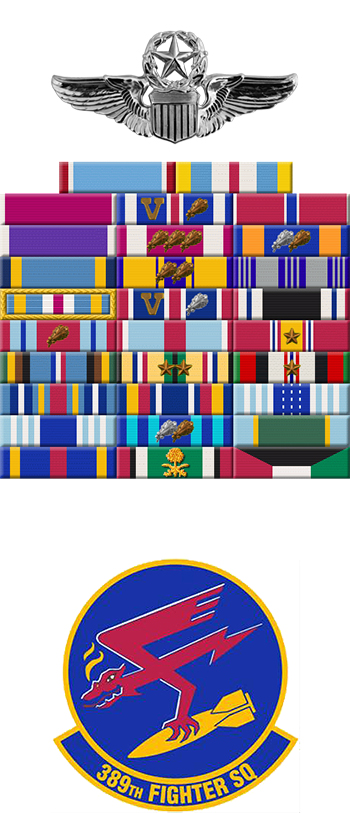
|
William F. Andrews |
 |
|||
| Rank, Service | ||||
Colonel O-6, U.S. Air Force |
||||
| Veteran of: | ||||
|
||||
| Tribute: | ||||
Bill Andrews was born on September 13, 1958, in New York. He entered the U.S. Air Force Academy in June 1976, and was commissioned a 2d Lt in the Air Force on May 28, 1980. Lt Andrews next completed Undergraduate Pilot Training and was awarded his pilot wings at Columbus AFB, Mississippi, in June 1981, followed by Instructor Pilot Training from June to December 1981. His first assignment was as a T-37 Tweet Instructor Pilot with the 37th Flying Training Squadron of the 14th Flying Training Wing at Columbus AFB from December 1981 to February 1985, followed by F-111 Aardvark and EF-111 Raven upgrade training. Capt Andrews then served as an EF-111 pilot with the 390th Electronic Combat Squadron of the 366th Tactical Fighter Wing at Mountain Home AFB, Idaho, from November 1985 to July 1989. His next assignment was as an F-16 Falcon pilot with the 10th Tactical Fighter Squadron of the 50th Tactical Fighter Wing at Hahn AB, Germany, from July 1989 to September 1991, during which time he flew combat missions during Operation Desert Storm from January 1991 until he was forced to eject and was taken as a Prisoner of War by Iraqi forces on February 27, 1991. He was released from captivity on March 5, 1991, and returned to duty after recovering from his injuries. Maj Andrews next served as Assistant Operations Officer and as an F-16 Instructor Pilot with the 310th Fighter Squadron of the 58th Fighter Wing at Luke AFB, Arizona, from September 1991 to July 1993, and then completed Air Command and Staff College and the School of Advanced Airpower Studies at Maxwell AFB, Alabama, from August 1993 to July 1995. His next assignment was on the staff of Headquarters Air Combat Command at Langley AFB, Virginia, from July 1995 to June 1997, followed by service as Commander of the 389th Fighter Squadron of the 366th Wing at Mountain Home AFB from June 1997 to July 1999, during which time he deployed to Saudi Arabia in support of Operation Southern Watch in 1998. Col Andrews next attended the Industrial College of the Armed Forces at Fort McNair, Washington, D.C., from August 1999 to August 2000, and then served as Commander of the 366th Operations Group of the 366th Wing at Mountain Home AFB from August 2000 to August 2002. During this time he flew combat missions during Operation Enduring Freedom in Afghanistan from November 2001 to February 2002. Col Andrews served on the Joint Staff at the Pentagon from March 2002 to June 2004, and as a Professor at the National Defense University in Washington, D.C., from June 2004 to June 2008. His final assignment was as CSAF Chair at the Industrial College of the Armed Forces at Fort McNair from June 2008 until his retirement from the Air Force on June 1, 2010. Bill Andrews died on June 8, 2015. |
||||
|
||||

